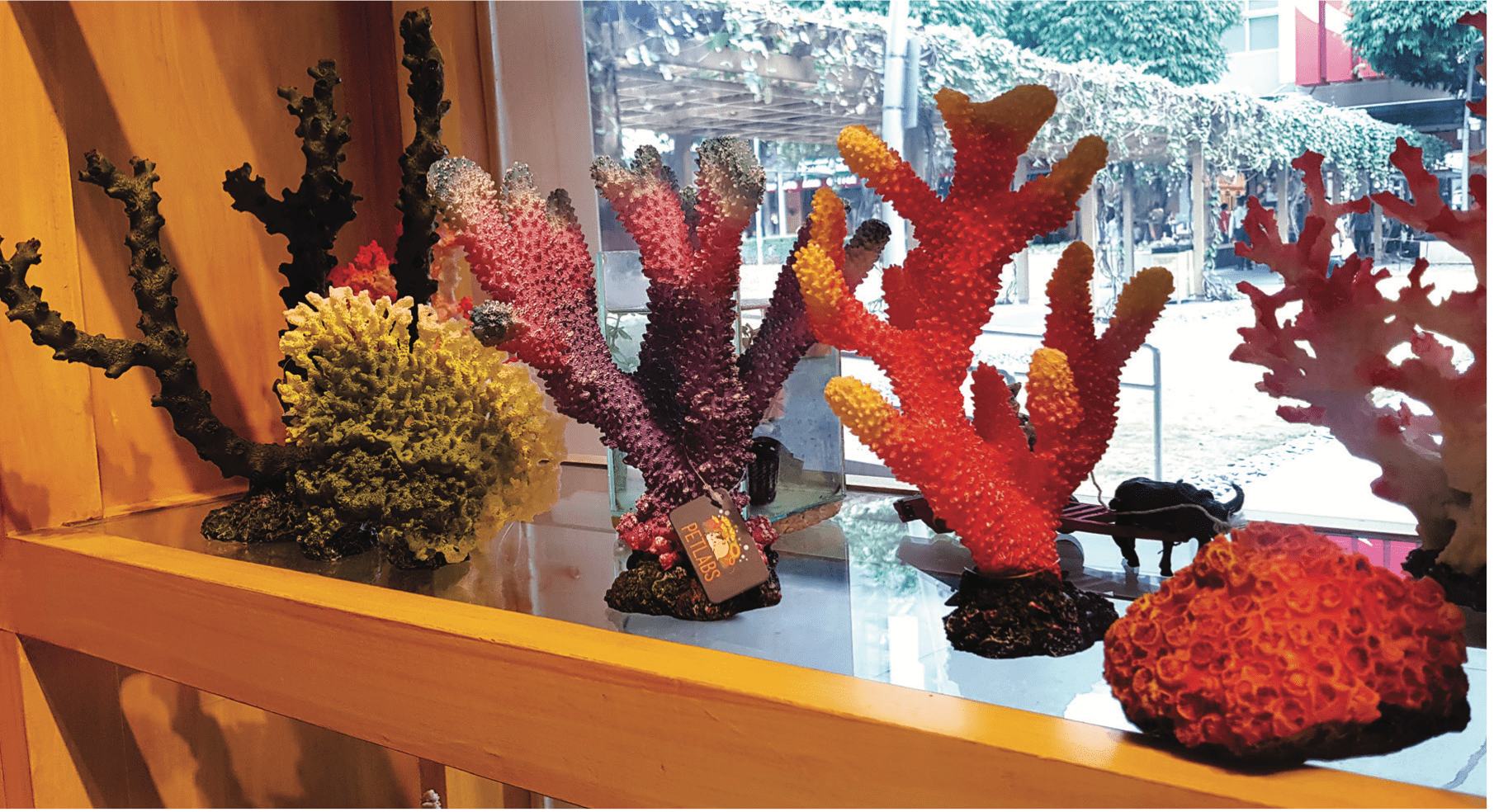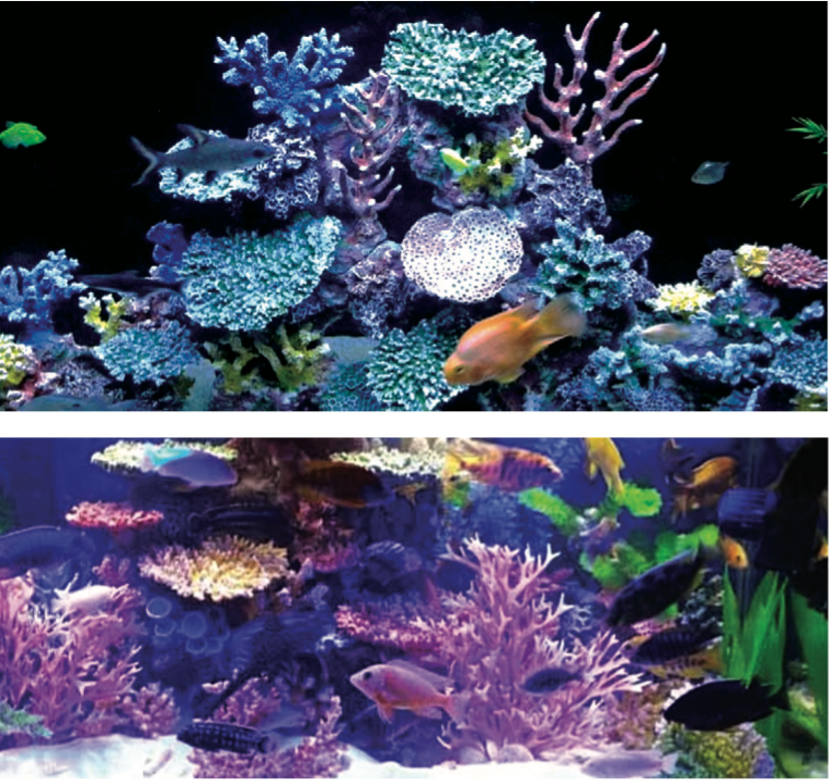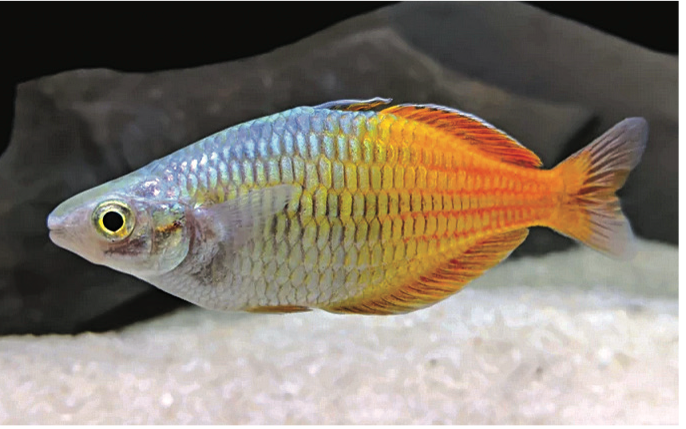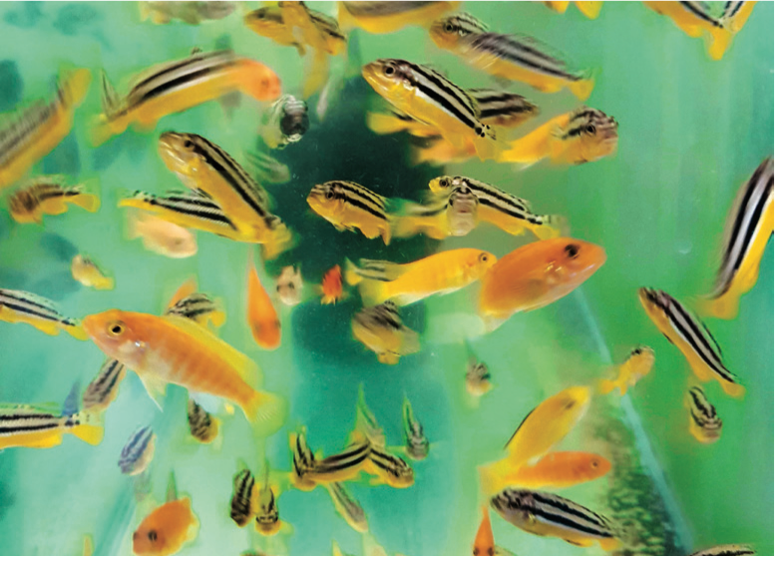You gotta admit, marine aquariums have the “wow” factor.
Sure, watching a shoal of tetras cruising over a sunken garden is relaxing, but the sheer vibrance and color of a “piece of reef” adorning your sala is hard to match.
There’s a catch. Marine aquaria require a truckload of gear to maintain – from protein skimmers, ultraviolet sterilizers, and other premium filters to lighting systems so powerful that they can literally light up your home (and your electric bill).

Then there’s stock sourcing. Nine of every ten marine fish are plucked wild from the coral reefs of 40 countries, led by the Philippines, Indonesia, and Sri Langka. It’s hard as heck to catch reef fish, so many are caught with sodium cyanide, which eventually kills not just coral, but the very fish being collected.
Around nine out of every 10 wild-caught marine fish die within a year of capture.
Finally, there are the legalities. Keeping many of the core elements of a traditional miniature reef or “mini-reef” tank is now illegal in the Philippines. Displaying Hard Corals, Giant Clams, and Sea Fans in your home – whether they’re thriving or not – is a criminal offense without legal papers from the Bureau of Fisheries.
All this brings us to our latest experiment for The Wild Side. Fish lovers, to enjoy the beauty of the sea sustainably, we bring you the Freshwater Reef Tank (FRT).
PRACTICAL ALTERNATIVE
Easy to keep and light on the wallet, the FRT requires no special equipment or additives. No trace elements, bottled plankton, weekly water changes (I haven’t changed my tank’s water in a year), or constant worrying about whether your staghorn coral head will make it to the next month.
All you need is a good-sized tank with a dark background. Blue or black works best, but a printed reef backdrop will give an illusion of depth.

The two most important elements of your FRT are lighting and current, because these give the impression of being under the sea. For lighting, stick with blue and white LEDs. To create a current, get a good powerhead for a powerful flow, mimicking the powerful tides which pull water and plankton over a coral reef.
Please don’t use real Coral or live rocks. Our goal after all is to recreate the beauty of the sea sustainably.
Next comes the substrate. White Coral sand of course works best, though I used black volcanic sand to emphasize the colors of the fish. White Coral sand will also raise the pH of the water, which is good for hardwater swimmers like Rift Valley Cichlids but bad for softwater dwellers like Amazonian fish.
Instead of the live rocks (limestone rocks encrusted by coralline algae, Sponges, Corals, and other critters) which usually form the base of a “mini-reef”, use volcanic or limestone rocks. In time, beneficial bacteria and other microorganisms like algae will coat these surfaces, forming freshwater live rocks.
FUN WITH FAKES

Here’s the fun part: “stocking’ your tank with invertebrates – but only those hewn from plastic, silicone, rubber, and resin.
Take a look at what Shopee, Lazada, and Alibaba are offering. There are artificial Corals, Sea Fans, Sponges, Tunicates, Zooanthids, sea anemones, Giant Clams, Flame Scallops, Feather Duster Worms, Christmas Tree Worms, Leather Corals, seaweed, and everything else you can think of.
Go wild and invest in as much as you want. Unlike real Corals and sessile invertebrates (critters attached to the rocks in a Coral reef), these look real enough even up close, are legal to keep, last a lifetime, and will never die.
Once you arrange your new FRT, cycle it normally in preparation for your livestock.

STOCKING YOUR FRESHWATER REEF

There are hundreds of freshwater fish who look and act like marine fish. Top-of-mind are the brightly-colored but aggressive Rift Valley Cichlids of Africa, whom we have written about before. Yellow Princes and Blue Zebras look and dart about like Damselfish. Peacocks and Brichardis move like Anthias, especially against a current. Brightly-colored Auratus and Julies prowl around like Sweetlips.
Next comes Glofish, another topic covered by The Wild Side. A large shoal of green Danios can look like a group of Chromis. A shoal of mid-sized golden or pink Danios swimming against the current look like Anthias. The deeper-bodied Glow Tetras look like small, spaced-out Butterflyfish.

Rainbowfish – particularly Boesman’s Rainbowfish – are excellent choices for centerpieces, with coloration and behavior every bit as vivid as marine fish (they evolved from marine Silversides after all). A shoal of large yellow or blue Discus will be an expensive showstopper, but worth the investment.

Brackish water fish like Silver Monos and Scats will look like Pompanos and Butterflyfish. Even the familiar Bala Shark can look like a Miniature Shark. Siamese Tiger Fish will look and act like Marine Snappers. Spiny Eels can double for the Moray Eels we divers always look for in reefs. Small Gobies like Biya or Bumblebee Gobies are perfect for smaller tanks. Large Corydoras or Brochis Catfish can double for Sand-Sifting Goatfish.

Red, blue, orange, white Crayfish look just like Marine Lobsters. Even Ghost Shrimp and Clawed Prawns or Ulang look authentically marine under blue LED lighting. Freshwater plants like Vallisneria look almost exactly like seagrass – and can be used for a themed FRT like a freshwater seagrass bed, complete with Tiger Barbs or Indian Glassfish doubling as Cardinalfish and freshwater Pipefish doubling as their marine counterparts.
As you can imagine, the possibilities are endless.
SUSTAINABLE OPTIONS
By using more sustainable and Best Alternatives, we can enjoy the best that the aquarium industry has to offer, while limiting our impact on the planet’s natural systems, especially Coral reefs.
We hope this month’s entry has gotten you interested in starting your FRT. Please send us pictures via Facebook and we might just feature them in future entries of The Wild Side.






